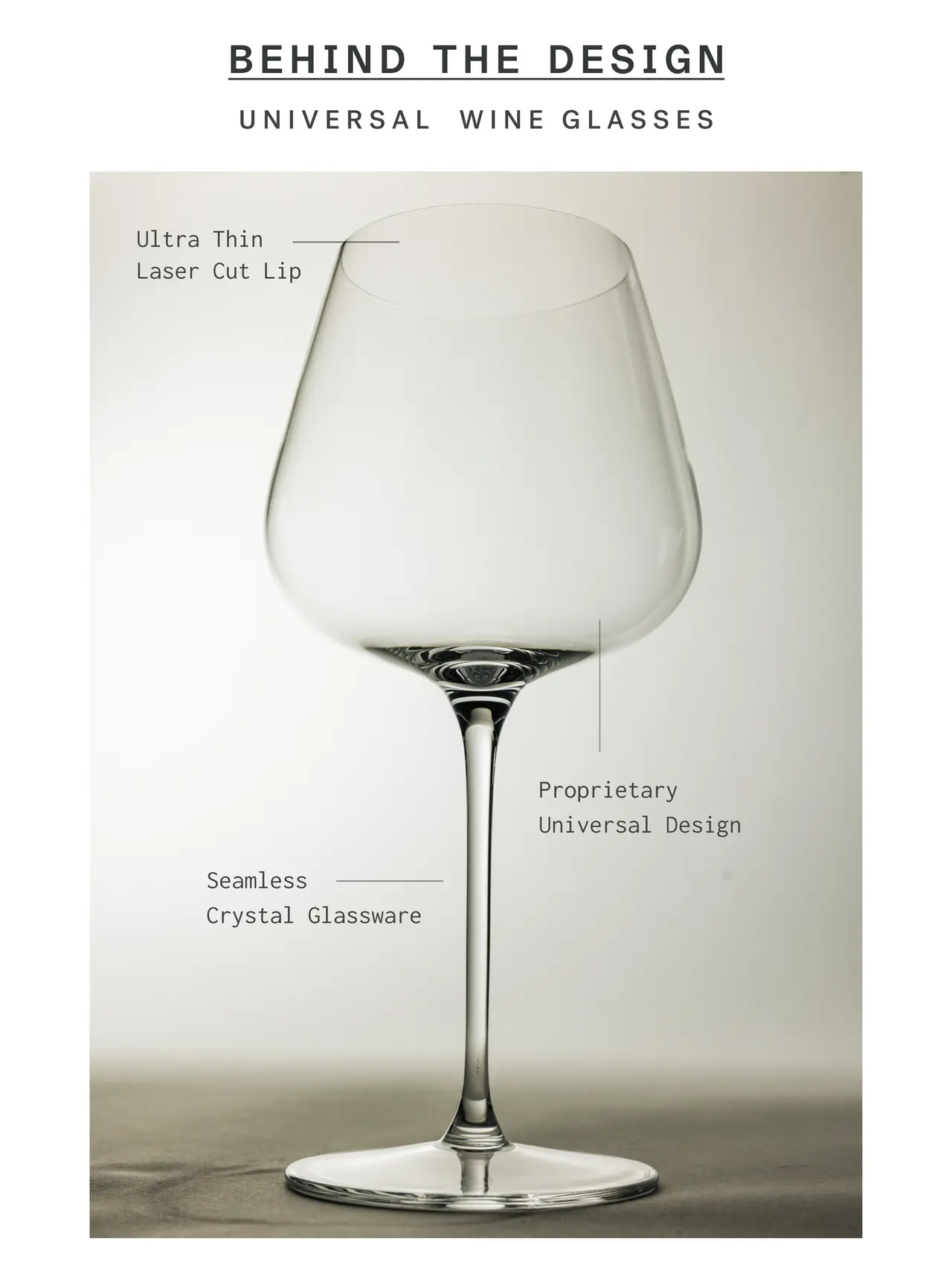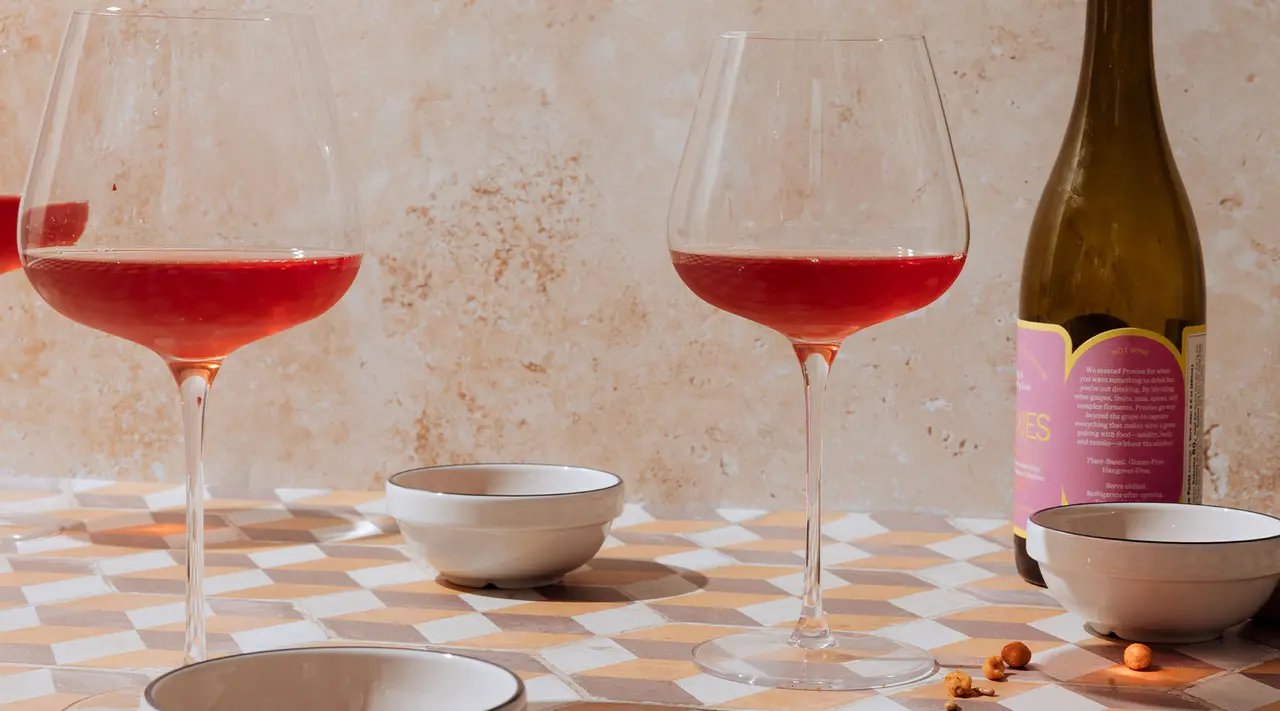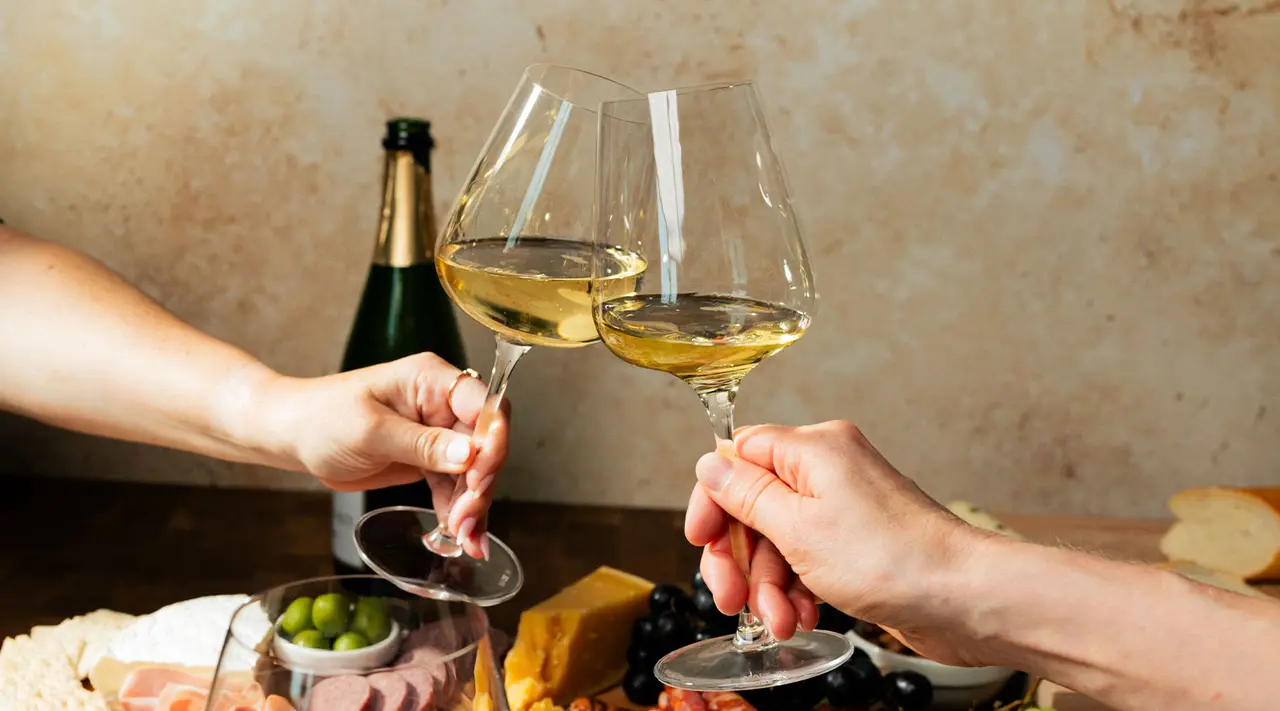“There are over 400 different wine glasses branded for certain wines, but I love an all-purpose glass,” says Alicia Towns Franken, wine industry legend and Executive Director of Wine Unify. “These are absolutely perfect.”
It’s a glowing review from one of our favorite leading voices in the world of wine, and a bit of a relief after we spent two years working on the modified designs. The new shapes of both our Red and White Wine Glasses are completely proprietary, engineered to be elegant and universal. We’re also excited to be partnering with a new (to us, at least—they’ve been making glassware since 1521) 11th-generation manufacturer in Germany.
A lot goes into making boutique stemware, and even more goes into perfecting it. Here’s how we did it.
Pristine Raw Materials

We make a whole range of kitchen and dining products, but all of them have this in common: Each begins with the finest raw materials. Maybe it’s because we spend too much time with chefs, but we think that ultimately, quality comes down to the ingredients you use.
In the case of our Wine Glasses, the ingredient is refined quartz sand. Ours is sourced from an Austrian mineral deposit—the purest in Europe, and the starting point in fine stemware production for centuries.
Here’s why.
- Nearly Flawless Clarity: No matter how much care has gone in, the most expensive bottle can be ruined with the wrong glass. The right one steps back, allowing the wine to speak for itself. With no imperfections marring their clarity, our glasses allow you to fully appreciate the wine.
- Increased Strength: The purity of the raw material creates a piece with more structural integrity—fewer impurities at the start means fewer breaking points in the final product. And while these are stunning enough for any finely set table, they’re also durable enough to be dishwasher safe up to 1,500 cycles—in fact, that’s our recommended method of cleaning them (top rack, use a rinse aid).
- Increased Flexibility: The purity of the raw materials makes the glass more pliable while it’s being “blown.” This property is what enabled us to create a thinner, more elegant glass with no seam.
We use a refractive index test to confirm the quality and clarity of the crystal we use, but you don’t need a lab setting to test how high-quality our Wine Glasses are. You can actually hear a great wine glass—cheaper, thicker glasses sound the same way they look: clunky.
Premium Two-Piece Construction

Most glasses on the market—maybe even the glasses on your shelf at home—are assembled from 3 separate pieces: the bowl, the stem, and the foot. This is cheaper to manufacture, and less elegant by far.
We opt for a stronger two-piece construction, mostly because one-piece construction isn’t possible (yet). By working with artisans as obsessive about quality as we are, we implemented a new manufacturing process that yields a balanced wine glass that’s less prone to breaking and spilling.
- Machine-Blown Technique: Hand blown glass is an incredible testament to human ingenuity, but it’s also prohibitively priced and extremely limited in scale of production. With mechanized glassblowing techniques like ours, raw materials are transformed into stemware that’s consistent in shape, strength, thinness, and appearance. And truthfully, there’s no real difference between the two when it comes to the final product—except price.
- Seamless Body: Molten glass is poured into a mold to form the bowl, from which the stem is then pulled. Because it comes from a single piece, there’s no seam connecting the stem to the bowl. It’s a difference you can feel, both in how the glass rests in your hand and how much you enjoy drinking from it. The foot, equal in weight to the bowl, is then welded onto the stem to serve as both a base and a counterweight.
- Laser Cut Lip: To finish each stem, the top of each bowl is laser cut (twice!) to achieve a clean, refined edge. At just 1.5mm thick, the thinness of the lip allows wine to flow smoothly onto your palate, so there’s nothing getting in the way of you and what you’re drinking.
Spend enough time making products and eventually you come to realize that there’s no shortcut for craftsmanship. Plenty of new manufacturers try, but it’s the skill and knowledge that comes with dedicated practice that makes a product or tool—or, say, a wine glass—perfect.
Proprietary Universal Design
As you may know, Made In is a descendent of Co-Founder Jake Kalick’s family business that’s been outfitting restaurants, hotels, and all sorts of commercial kitchens and fine dining rooms with quality tools since 1929. Growing up in the business, Jake had the opportunity to buy, sell, and use every size, shape, and variation of glass on the market.
Which is all to say: When we decided to design our own Wine Glasses, we knew exactly what we were looking for. We wanted two universal shapes—one for red wine, and one for white—that could accommodate and accentuate all the major wine varietals our customers enjoy most. Together, they’re the perfect starter set.
Earning the trust of our partners, who have centuries of their own stemware expertise, was quite a privilege, but after a great deal of collaboration and testing, here’s what we came up with.
Red Wine Glasses

A hybrid of Cabernet and Burgundy-style wine glasses, the decanter-style bowl oxygenates wine and encourages volatile compounds to dissipate. This balance allows you to open up those bigger, bolder reds, enhancing aroma while tannins are reigned in.
Like most red wine glasses, ours feature a wide opening. Smell plays a big role in how we taste, so it’s important that you’re able to really get your nose in there.
Higher walls offset the openness of the glass, effectively guiding the aromas onto your palate. Overall, it’s got a lovely balance—easy to pour into and fun to drink out of.
White Wine Glasses

Tastes may change, but the right wine glass is always one that will magnify whatever you’re drinking. The narrower profile of our White Wine Glass is big enough for a full-bodied Viognier, yet structured enough to keep the aromas more concentrated.
Equally at home in Michelin-starred restaurants and on weeknight dinner tables, it balances acidity and body whether still or sparkling. And on that note, we actually prefer bubbly wines in the White Wine Glass over a traditional Champagne flute—the narrow height of the flute shows off the bubbles, but doesn’t do any favors for the gustatory and olfactory experiences.
We’re big believers here that investing in the right tools makes all the difference in your kitchen, and wine glasses are no exception. After years of work, our newly redesigned Wine Glasses are finally here and ready for you to try at home.
































